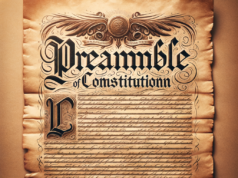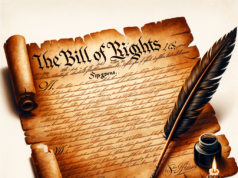
The United States Constitution is the foundation of the American legal system. It is a complex document that establishes the framework for the government of the United States and outlines the rights and responsibilities of citizens. In order to understand the Constitution, it is essential to be familiar with its functions and types.
Functions of the Constitution:
The Constitution serves several functions, the most important of which are:
1. Establishing the Framework for Government: The Constitution outlines the structure of the federal government, including the three branches of government (legislative, executive, and judicial), and establishes the responsibilities and powers of each branch.
2. Protecting Fundamental Rights: The Constitution protects the fundamental rights of American citizens, including freedom of speech, religion, and the press, the right to bear arms, and the right to a fair trial.
3. Providing a System of Checks and Balances: The Constitution establishes a system of checks and balances that ensures that no one branch of government becomes too powerful. This system prevents any one person or group from taking control of the government.
Types of the Constitution:
There are two types of constitutions: written and unwritten.
1. Written Constitution: The United States Constitution is a written constitution. A written constitution is a document that lays out the structure and powers of the government, as well as the rights and responsibilities of citizens. The advantage of a written constitution is that it provides a clear framework for the government and outlines the basic rules that govern society. The disadvantage is that it can be difficult to amend, as it requires a complex, multi-step process that involves both the federal government and the state governments.
2. Unwritten Constitution: An unwritten constitution is a set of unwritten rules and traditions that govern the country. Unlike a written constitution, an unwritten constitution is not codified in a single document. Instead, it is based on a variety of sources, including court decisions, historical precedent, and customs. The advantage of an unwritten constitution is that it is more flexible than a written constitution, as it can be adapted to meet changing societal needs. However, the disadvantage is that it can be less certain, as it is based on less concrete rules and traditions.
In conclusion, the United States Constitution is the backbone of the American legal system. It serves several important functions, including establishing the framework for government, protecting fundamental rights and providing a system of checks and balances. The Constitution is a written constitution, which provides a clear framework for the government and society. Understanding the Constitution is essential to understanding American law and the principles upon which it is based.
Constitutions can vary according to the kind of political entity they govern and the extent to which they govern it. In this sense, perhaps the most widely considered form of constitutional law is that placed on a national level, as in the case of the United States Constitution, generally considered the modern world’s most influential constitution.
Constitutions may exist for specific regions, provinces or states within the larger framework of a nation and, in that sense, national constitutional law. Constitutional theory also allows for the possible existence of a constitution across national borders, or in the terminology of this area, a supranational constitution. Groups which are not formerly part of governments but which exist for the express purpose of influencing politics, such as unions, interest groups and parties, are likely to also have constitutions. Outside of the political realm, the written framework for large organizations is not often referred to as a constitution but may be plausibly referred to as one.
The essential concept of a constitution is tied in with writing and codification. That being said, some constitutions exist on an unwritten basis. To reach far back in history, the organization of the Iroquois Nation of North America, believed to have occurred somewhere around the 11th and 12th centuries, occurred without any writing but possessed enough similarities to the developing European model for constitutional law to be later cited by the “Founding Fathers” of the United States as an influence.
The best-known of the unwritten constitutions, and one furnished by the European experience, is that of the United Kingdom, which, through its early control over the North American colonies and in other ways, profoundly influenced the rights and provisions addressed in the written United States Constitution.
Another division to be drawn between constitutions can be found on the issue of whether or not they are codified. Codification is the most strategic in constitutional law, but several constitutions exist in the world that are in uncodified form. The concept is similar but not identical to the issue of whether a constitution is written.
Codification generally allows constitutional law to serve as precedent in court over statutory law, as, for instance, in the United States a law might be rejected by the Supreme Court for being unconstitutional. Codification generally occurs first at a single and identifiable historical moment, as in the United States’ transition from the Articles of Confederation to a period of Federal power.
Codification of constitutional law generally identifies and firmly guarantees its most basic principles. By contrast, constitutions which are not codified rely on a past body of legal precedent as it has gradually taken shape, rather being decisively put into practice. Non-codified constitutions can be found in complete form in the United Kingdom, Israel and New Zealand, while only partially codified constitutions also exist in Australia and other nations, in the sense of some fundamental principles lying outside the primary document of the constitution. Non-codified constitutions are likely to be “written,” however, in the sense of being enumerated in written documents.

























